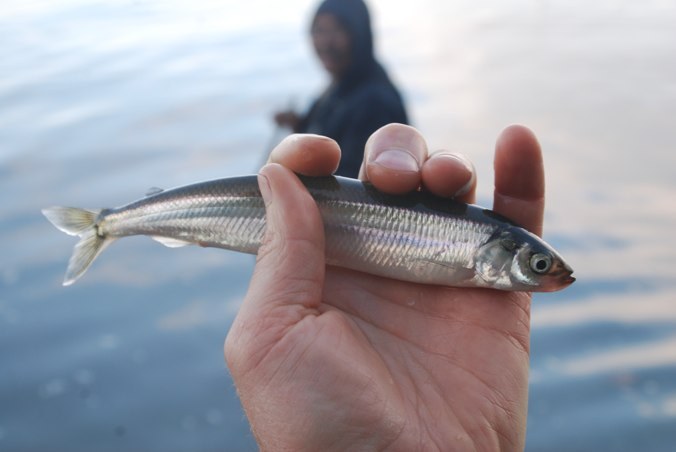Project update 2015
This study has been published in the peer reviewed journal, the North American Journal of Fisheries Management. Get the details.
According to the author, based on the results of this study the Department of Fish and Wildlife plans to assess smelt harvest at several sites in 2016, bringing a Sound-wide estimate of harvest one step closer to reality.
Additionally, in 2015 the Washington Legislature fully funded two important studies that will help the Washington Department of Fish and Wildlife take the next step in understanding and protecting forage fish populations.
The first study will inventory forage fish spawning beaches throughout Puget Sound and the second will conduct mid-water trawl surveys to estimate the biomass of adult forage fish. Expect the results of both studies in 2017.
Project update June 2014
On June 16, 2014, the Washington State Fish and Wildlife Commission released new smelt fishing rules that limit harvest in order to protect valuable species.
The new policy:
- Adds a new 60,000-pound annual quota for the Puget Sound commercial smelt fishery.
- Reduces the commercial fishery by one day each week, allowing commercial fishing from 6 a.m. to 10 p.m. Monday through Thursday during seasonal openings in each area.
- Closes inactive commercial smelt fisheries, including dip bag and purse seine, which have not been in use for at least 10 years.
- Closes nighttime recreational dip net fishing. Recreational dip net fishing will be allowed from 6 a.m. to 10 p.m. Friday through Tuesday. Jig gear can continue to be used seven days per week, 24 hours per day.
Population abundance estimates are not available for smelt. However, Puget Sound-wide commercial catch and catch rates indicate relatively high harvest over the last several years. The commission also requested an annual review of the commercial and recreational smelt fisheries in Puget Sound.
SeaDoc would still like to see the Commission require recreational licenses so that it could determine how much smelt is being harvested recreationally. Also, we'd like to see Washington State determine the total biomass of smelt so that we can have evidence that the harvest is sustainable.
In 2012, SeaDoc funded a study to determine the size of the recreational harvest of Surf Smelt in Washington State.
Why not just have anglers report their catch like we do with salmon and crab?
Strangely enough, Surf Smelt is the one marine fish that you DON'T need a state fishing license to catch.
As one of our very important forage fishes, smelt have a critical place in the Salish Sea food web. Knowing the recreational catch is important so we can determine if harvest is impacting smelt populations or the other fish, birds and mammals that depend on smelt for food.
A creel survey is pretty straightforward: staff from the Washington Department of Fish & Wildlife go out to popular fishing spots, interview smelt anglers and examine their harvest to find out how much they caught.
Joe Gaydos went along on one of the studies and reported, anecdotally, that most of the people he chatted with were happy to talk to him, already had fishing licenses, and used their catch for food.
Want to see pictures and video of the smelt harvest or learn more about forage fish issues? Read on!
Learn more about SeaDoc's work on forage fish at the following pages:
- Research on how changes in forage fish availability affect the reproductive success of Common Murres on Tatoosh Island
- An overview of Nacho Vilchis's project to understand marine bird declines in the Salish Sea
- Summary of the 2011 Forage Fish Needs Assessment Workshop sponsored by SeaDoc and others.
Video
Photographs
All video and photos by J. Gaydos.






